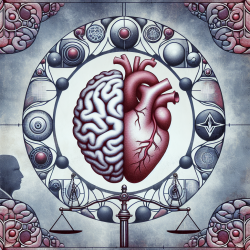The cerebellum, traditionally associated with motor control, is now gaining attention for its potential role in cognitive processes. Recent research has uncovered promising insights into how cerebellar stimulation might improve cognitive symptoms in schizophrenia. This blog explores these findings and encourages practitioners to consider new approaches to treatment.
The Cerebellum's Cognitive Role
The cerebellum is not just a hub for motor functions; it also plays a significant role in cognition. Its connections with the prefrontal cortex suggest that it can influence higher-order brain functions. In schizophrenia, abnormalities in these regions contribute to cognitive deficits, leading researchers to explore innovative treatment strategies.
Cerebellar Stimulation: A Novel Approach
The research article "The therapeutic potential of the cerebellum in schizophrenia" introduces a groundbreaking hypothesis: optogenetic cerebellar stimulation can restore frontal activity and improve cognition in schizophrenia patients. This approach leverages the cerebellum's connections with the anterior cingulate cortex to modulate brain activity and address cognitive impairments.
Key Findings:
- Cingulocerebellar Circuit: The study highlights a disynaptic connection between the cerebellar dentate nuclei and the anterior cingulate cortex. This pathway is crucial for cognitive processes and is disrupted in schizophrenia.
- Dopamine Pathways: The cerebellar fastigial nuclei's connection to the ventral tegmental area (VTA) suggests a role in dopamine regulation, which is often deficient in schizophrenia.
- Cognitive Improvements: Cerebellar stimulation has shown promise in improving working memory and reducing negative symptoms in treatment-resistant schizophrenia patients.
Implications for Practitioners
The potential of cerebellar stimulation offers a new avenue for treating cognitive symptoms in schizophrenia. Practitioners should consider integrating these insights into their therapeutic strategies or pursue further research to validate these findings. The use of optogenetics, neuropharmacology, and electrophysiology presents exciting possibilities for developing targeted treatments.
The therapeutic potential of the cerebellum in schizophrenia
This research represents a significant step forward in understanding and treating schizophrenia. By exploring the cingulocerebellar circuit and its influence on cognition, practitioners can develop more effective interventions for patients struggling with this complex disorder.
If you're interested in exploring this topic further, we encourage you to read the original research paper linked above. It provides a comprehensive overview of the study's methodology and findings, offering valuable insights into this innovative approach to schizophrenia treatment.










